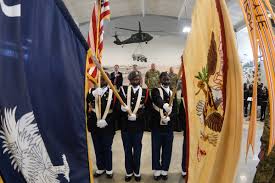Joining yarn is an essential skill for knitters and crocheters, allowing you to seamlessly continue your projects without knots or breaks. Whether you’re a beginner or looking to improve your technique, this guide will provide you with step-by-step instructions on how to join yarn effectively.
Why Knowing How to Join Yarn is Important
Knowing how to join yarn correctly can make your projects look more professional and ensure they are durable. Poorly joined yarn can create weak spots that might unravel, but with the right techniques, your transitions will be smooth and secure.
Different Methods to Join Yarn
There are several methods to join yarn, and the best one to use often depends on your project and personal preference. Here, we’ll cover some of the most popular methods:
- Weaving in Ends
- Russian Join
- Spit Splice (Felting)
- Magic Knot
- Knotless Join
1. Weaving in Ends
Step-by-Step Guide:
- Finish Your Row: When you reach the end of your yarn, leave a tail of about 6 inches.
- Start with New Yarn: Begin the new yarn, leaving another 6-inch tail.
- Overlap the Yarns: Lay the new yarn over the old yarn tail.
- Weave in the Ends: Use a yarn needle to weave the tails into the stitches on the wrong side of your work.
Pros: Easy and secure.
Cons: Can be bulky if not done carefully.
2. Russian Join
Step-by-Step Guide:
- Thread the Old Yarn: Thread the old yarn through a yarn needle.
- Insert the Needle: Insert the needle back through the yarn to create a loop.
- Thread the New Yarn: Insert the new yarn through the loop created by the old yarn.
- Secure and Trim: Pull the new yarn through and trim the excess ends.
Pros: Creates a seamless join with no tails to weave in.
Cons: Can be tricky for beginners.
3. Spit Splice (Felting)
Step-by-Step Guide:
- Fray the Ends: Fray the ends of both yarns.
- Wet the Ends: Slightly wet the frayed ends (spit or water can be used).
- Overlap and Rub: Overlap the frayed ends and rub them together between your palms until they felt together.
Pros: Strong and invisible join.
Cons: Only works with animal fibers that felt.
4. Magic Knot
Step-by-Step Guide:
- Tie Knots: Tie a knot with the old yarn around the new yarn and vice versa.
- Pull Tight: Pull the knots tight against each other.
- Trim Ends: Trim the ends close to the knots.
Pros: Very secure, no ends to weave in.
Cons: Small knot can be visible.
5. Knotless Join
Step-by-Step Guide:
- Overlap Yarns: Overlap the end of the old yarn with the beginning of the new yarn for several stitches.
- Knit or Crochet Together: Work both yarns together for a few stitches.
- Drop the Old Yarn: Drop the old yarn and continue with the new yarn.
Pros: Easy and quick.
Cons: Slightly bulky where the yarns overlap.
Choosing the Right Method
The best method depends on your project and the type of yarn you’re using. For example, the spit splice is excellent for wool but won’t work for synthetic fibers. The Russian join is great for a seamless look, but it can be complicated for beginners.
Tips for Joining Yarn
- Match Yarn Types: Try to join similar types of yarn for a more consistent look.
- Avoid Knots: Knots can create weak points in your work.
- Practice: Practice each method on scrap yarn to see which one you prefer.
- Consider the Pattern: Some patterns may dictate the best method to use.
Common Mistakes and How to Avoid Them
- Visible Knots: Always aim to hide knots or use knotless methods.
- Loose Ends: Make sure the ends are securely woven in to prevent unraveling.
- Inconsistent Tension: Keep your tension consistent when joining yarn to avoid noticeable changes in your work.
Conclusion
Joining yarn is a fundamental skill for any knitter or crocheter. By mastering various joining techniques, you can ensure your projects are both beautiful and durable. Experiment with different methods to find the one that works best for you, and enjoy the seamless flow of your creative process.
By following this guide, you’ll be able to join yarn like a pro, making your knitting and crochet projects look more polished and professional. Happy crafting!



